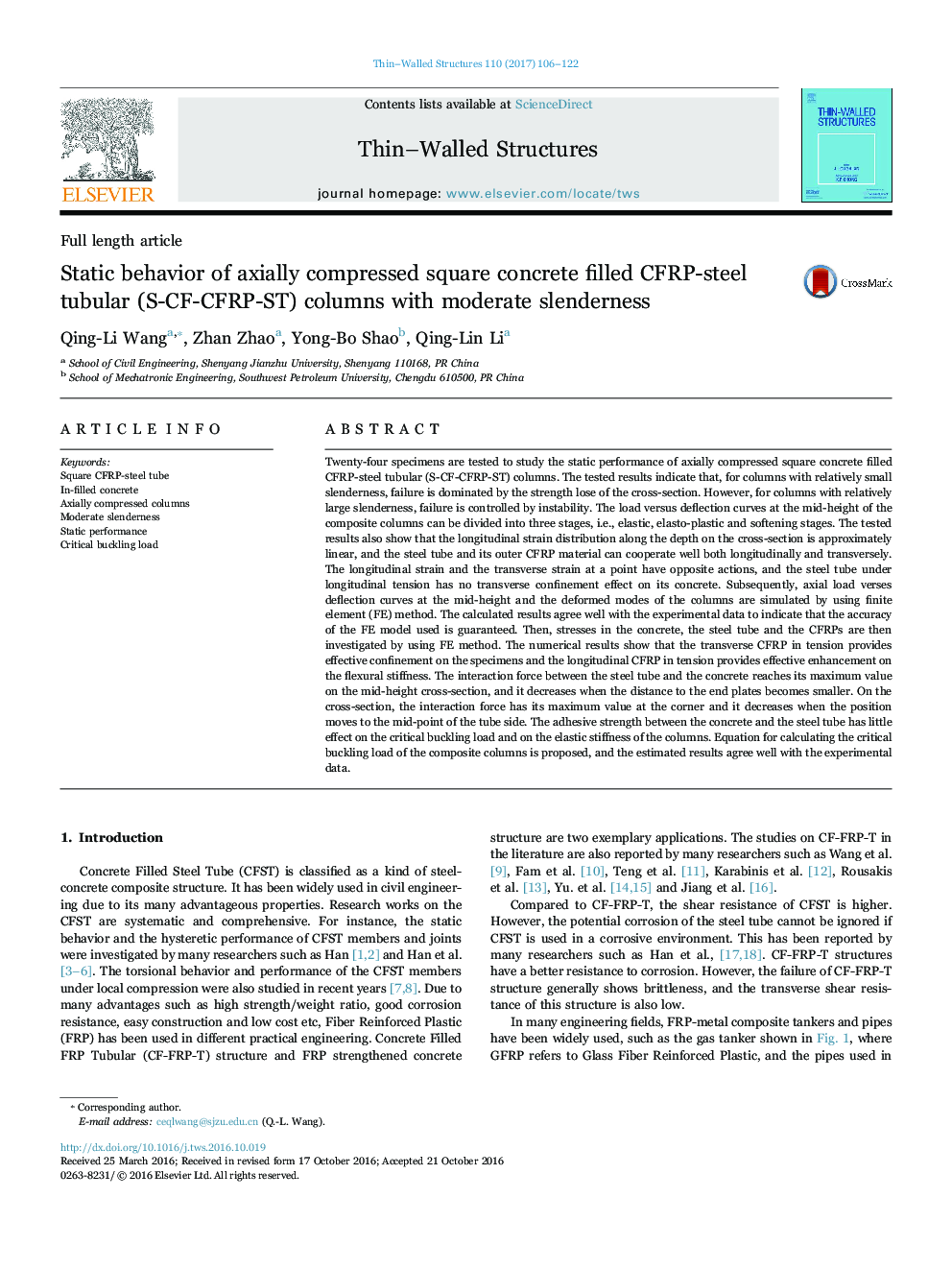| Article ID | Journal | Published Year | Pages | File Type |
|---|---|---|---|---|
| 4928714 | Thin-Walled Structures | 2017 | 17 Pages |
Abstract
Twenty-four specimens are tested to study the static performance of axially compressed square concrete filled CFRP-steel tubular (S-CF-CFRP-ST) columns. The tested results indicate that, for columns with relatively small slenderness, failure is dominated by the strength lose of the cross-section. However, for columns with relatively large slenderness, failure is controlled by instability. The load versus deflection curves at the mid-height of the composite columns can be divided into three stages, i.e., elastic, elasto-plastic and softening stages. The tested results also show that the longitudinal strain distribution along the depth on the cross-section is approximately linear, and the steel tube and its outer CFRP material can cooperate well both longitudinally and transversely. The longitudinal strain and the transverse strain at a point have opposite actions, and the steel tube under longitudinal tension has no transverse confinement effect on its concrete. Subsequently, axial load verses deflection curves at the mid-height and the deformed modes of the columns are simulated by using finite element (FE) method. The calculated results agree well with the experimental data to indicate that the accuracy of the FE model used is guaranteed. Then, stresses in the concrete, the steel tube and the CFRPs are then investigated by using FE method. The numerical results show that the transverse CFRP in tension provides effective confinement on the specimens and the longitudinal CFRP in tension provides effective enhancement on the flexural stiffness. The interaction force between the steel tube and the concrete reaches its maximum value on the mid-height cross-section, and it decreases when the distance to the end plates becomes smaller. On the cross-section, the interaction force has its maximum value at the corner and it decreases when the position moves to the mid-point of the tube side. The adhesive strength between the concrete and the steel tube has little effect on the critical buckling load and on the elastic stiffness of the columns. Equation for calculating the critical buckling load of the composite columns is proposed, and the estimated results agree well with the experimental data.
Related Topics
Physical Sciences and Engineering
Engineering
Civil and Structural Engineering
Authors
Qing-Li Wang, Zhan Zhao, Yong-Bo Shao, Qing-Lin Li,
